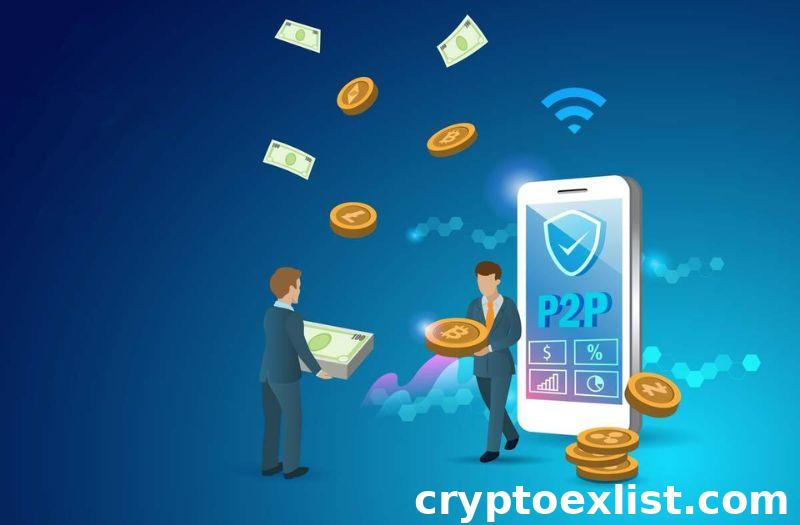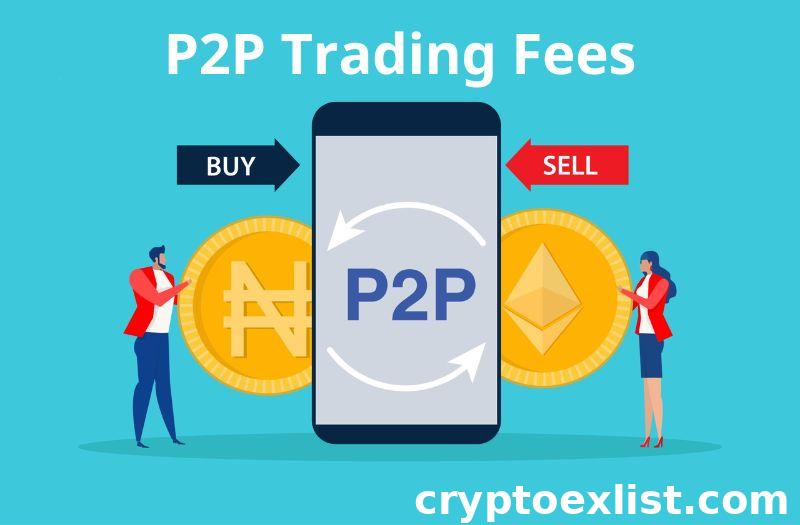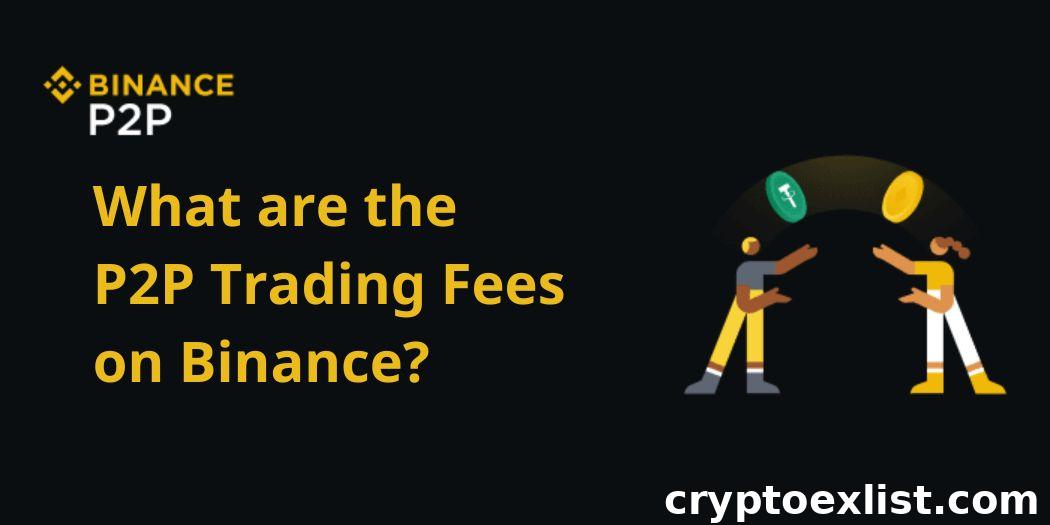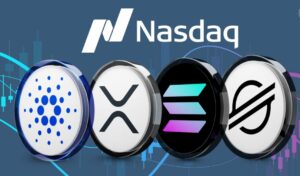
P2P trading on Binance offers a flexible and cost-effective way for users to buy and sell cryptocurrencies directly with one another. For those new to P2P trading, understanding the fee structure is crucial to maximizing profits and minimizing costs. In this guide, we’ll explore what P2P trading is, the types of fees involved, how Binance fee structure compares to other platforms, and key factors like market demand and transaction volume that influence fees. Whether you’re a beginner or an experienced trader, learning how P2P trading fees work will help you make informed decisions.
Understanding P2P Trading
Peer-to-Peer (P2P) trading has become an increasingly popular way for individuals to buy and sell cryptocurrency directly, offering users more control over their trades compared to traditional exchanges. On platforms like Binance, P2P trading allows buyers and sellers to connect and complete transactions without the need for a third-party intermediary. For beginners, understanding how P2P trading works and its key benefits is essential for getting started in the world of cryptocurrency.
Definition of P2P Trading
P2P trading, short for Peer-to-Peer trading, refers to the direct exchange of cryptocurrency between two users without relying on a centralized exchange to execute the transaction. Instead of placing orders on an automated exchange platform, traders can interact directly, negotiating prices, payment methods, and other terms. In this type of trading, the platform (like Binance P2P) acts only as a facilitator, providing a secure environment through escrow services, but the control over the transaction remains in the hands of the users.
How P2P Trading Works
In P2P trading, users create buy or sell offers for a specific cryptocurrency, such as Bitcoin or Ethereum, and list them on a platform like Binance P2P. Buyers can browse through these listings, select an offer that suits their needs, and agree to the terms set by the seller. Once both parties agree, the platform’s escrow system holds the cryptocurrency during the transaction. The buyer then sends payment via their chosen method (e.g., bank transfer, mobile wallet), and once the seller confirms receipt, the cryptocurrency is released from escrow to the buyer’s wallet. This system protects both parties and ensures a smooth transaction.
Key Benefits of P2P Trading
P2P trading offers several unique advantages that make it an attractive option for both new and experienced traders. One of the key benefits is greater flexibility, as traders can negotiate prices, choose from various payment methods, and complete transactions in a way that suits their individual preferences. Additionally, P2P trading often involves lower fees compared to traditional exchanges since there is no intermediary taking a cut of the transaction. For those in regions with limited access to banking services or restrictions on centralized exchanges, P2P trading provides a decentralized alternative, allowing users to trade freely. Finally, the use of escrow services adds an extra layer of security, ensuring that both the buyer and seller are protected throughout the process.

P2P Trading Fees Explained
When it comes to Peer-to-Peer (P2P) trading, understanding the fee structure is essential for maximizing your profits. P2P trading allows users to directly buy and sell cryptocurrencies with one another, but like any financial service, there are fees associated with these transactions. For those new to Binance P2P, learning about the types of fees, how they work on Binance, and how to calculate your potential profit will give you a clear picture of how to trade efficiently and cost-effectively.
Types of Fees in P2P Trading
In P2P trading, the most common types of fees include trading fees, payment processing fees, and potential withdrawal fees. Trading fees refer to the small percentage charged by the platform for facilitating the transaction, while payment processing fees may be imposed by external services like banks or mobile wallets that are used to complete the transaction. Finally, withdrawal fees are charged when transferring your funds out of the platform into another wallet or bank account. Each platform varies in how it applies these fees, so it’s important to understand what you’re being charged for before completing a trade.
Fee Structure on Binance
One of the standout features of Binance P2P is its extremely low or even zero trading fees for many transactions. Binance does not charge users for posting buy or sell offers, which sets it apart from many other platforms that charge a percentage of the transaction. For certain trades, particularly those involving specific currencies or payment methods, there may be minimal fees, but overall, Binance’s fee structure is designed to be highly competitive and accessible to traders worldwide. This fee-friendly approach makes Binance an attractive option for those looking to minimize costs while engaging in P2P trading.
Calculate Profit from Trading
To calculate your profit from P2P trading, it’s essential to factor in all costs involved, including any trading or payment fees, and the buying and selling price of the cryptocurrency. Start by determining the difference between your purchase price and the selling price—this is your gross profit. From here, subtract any applicable fees (including bank transfer fees, processing charges, or withdrawal costs) to arrive at your net profit. Binance’s low fees mean that more of your earnings remain in your pocket, but always be mindful of any external costs that might reduce your overall profit margin. Many traders use profit calculators or spreadsheets to track their earnings, ensuring they make informed decisions on future trades.
Comparison with Other Platforms
When comparing Binance P2P to other platforms, the lower fee structure is a significant advantage. Some platforms charge higher trading fees, ranging from 0.5% to 3%, which can eat into your profits over time. Additionally, payment processing fees may be higher on other P2P platforms, especially those that do not offer a wide range of payment methods like Binance does. By contrast, Binance’s zero-fee structure for posting trades and its competitive processing fees provide traders with more flexibility and better profit potential. This cost-effective model makes Binance P2P a go-to choice for both beginners and experienced traders looking for the best value.

Factors Affecting P2P Trading Fees
When engaging in Peer-to-Peer (P2P) trading, understanding the factors that influence trading fees can help you make informed decisions and maximize your profits. While Binance P2P offers some of the lowest fees in the market, certain variables, like market demand, transaction volume, and the currency pairs you’re trading, can impact your overall costs. By keeping these factors in mind, you can optimize your trading strategy to reduce fees and increase returns.
Market Demand and Supply
Market demand and supply play a significant role in determining P2P trading fees. When demand for a particular cryptocurrency is high, the competition among buyers increases, often leading to slightly higher trading fees or spreads. Similarly, when there’s a higher supply of a certain cryptocurrency on the platform, sellers might find themselves in a competitive environment, pushing fees lower to attract more buyers. For example, in times of market volatility or significant news events, fees may temporarily increase due to higher trading activity. By monitoring market trends, you can choose the right time to enter trades, potentially reducing fees and securing better deals.
Transaction Volume
The volume of your P2P transactions can also influence the fees you incur. Higher-volume trades often come with reduced fees, as platforms like Binance may incentivize larger trades with fee discounts. On the flip side, smaller trades might come with slightly higher fees, depending on the payment methods or the liquidity of the asset being traded. Binance P2P generally offers a flexible fee structure, but for traders who engage in higher volumes, the savings on fees can add up significantly. Keeping an eye on transaction volume and adjusting your trade sizes based on market conditions can be an effective strategy for minimizing costs.
Currency Pairs
The specific currency pairs you choose to trade can also impact your P2P fees. Different currency pairs have varying levels of liquidity and popularity, which can affect both the availability of buyers and sellers and the associated transaction costs. For example, popular pairs like BTC/USDT or ETH/USDT typically come with lower fees due to higher liquidity and frequent trading activity. In contrast, less common or less liquid currency pairs may have higher fees due to reduced availability and increased risk for traders. It’s worth doing some research to identify which currency pairs offer the best combination of liquidity and low fees, especially when trading on Binance P2P, which supports a wide variety of cryptocurrencies.

Conclusion
P2P trading on Binance provides a secure, user-friendly environment with one of the most competitive fee structures in the industry. By understanding the different types of fees, the factors that influence them, and how to calculate your profits, you can optimize your trading strategy and save on costs. Binance stands out for its low or zero fees on many transactions, making it a top choice for both beginners and experienced traders. As you navigate the world of P2P trading, keep in mind how market demand, transaction volume, and currency pairs can impact your fees, ensuring you always make the most informed decisions.























